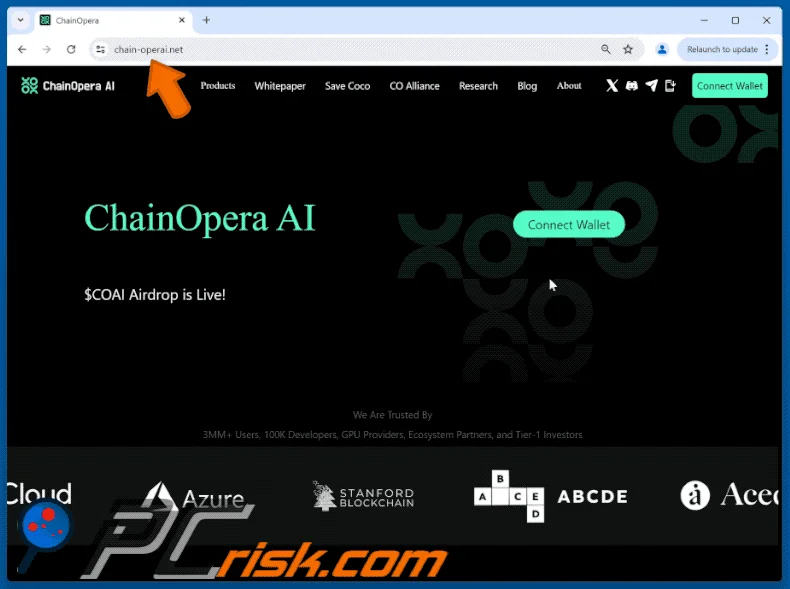XLM Insight | Stellar Lumens News, Price Trends & Guides
XLM Insight | Stellar Lumens News, Price Trends & Guides
Of course. Here is the feature article, written from the persona of Dr. Aris Thorne.
---
I’ve spent my entire career chasing the future. From the research labs at MIT to the bleeding edge of Silicon Valley, I’ve learned to spot the difference between a fleeting trend and a true paradigm shift. And what I’ve seen over the last few weeks with a project called ChainOpera AI ($COAI) has all the hallmarks of the latter.
Yes, I’ve seen the headlines screaming about a 600% price surge. I’ve read The Secret Behind ChainOpera AI’s Explosive Success: Strategic Cycle Timing and a Fully Diluted Valuation Beyond $4 Billion. It’s easy to dismiss this as just another chaotic, speculative crypto rally—a flash of lightning in a bottle.
But I'm telling you, if you only see the lightning, you're missing the entire storm. This isn't just about a token price. This is about a blueprint. We are witnessing a live-fire demonstration of how to build the next generation of technology, and it’s happening faster than any of us expected.
On the surface, ChainOpera’s explosive launch looks like an almost impossible stroke of good fortune. They launched right as the AI narrative was reigniting across the market. They chose the BNB Smart Chain just as it was experiencing unprecedented traffic and fee revenue, becoming the most active blockchain on the planet. They timed their perpetual futures listings to coincide with a massive surge in derivatives trading, ensuring deep liquidity from day one. It looks like they caught every single tailwind at the exact same time.
But calling this luck is like calling a Swiss watch a coincidence. This wasn't a perfect storm; it was a perfectly engineered engine. What the ChainOpera team understood is something that has plagued the Web3 space for years: the massive disconnect between the people who use a product and the people who invest in it.

Think about it. For most projects, those are two entirely different groups with different motivations. This creates a fundamental weakness. It’s like trying to run a car where the fuel is stored in one city and the engine is in another. ChainOpera didn't just bridge that gap—they fused the two parts together. They built a product that attracted three million users to their AI services, and then created a seamless funnel that converted 40,000 of them directly into token holders.
This is the kind of breakthrough that reminds me why I got into this field in the first place. They created a self-sustaining feedback loop. The more people use the product, the stronger the token-holding community becomes; the stronger the community, the more robust the ecosystem, which in turn attracts more users. It’s a flywheel. Are we finally seeing a model where value is directly tied to utility, not just speculation? What happens to an industry when every user is also an owner, a stakeholder with a vested interest in the platform's success?
For years, the AI-crypto space has been dominated by what I call “storytelling” projects. They had brilliant whitepapers, dazzling roadmaps, and grand visions of a decentralized AI future. The only thing they were missing was an actual, working product. It was all promise, no proof.
ChainOpera represents a fundamental shift from storytelling to what I'm calling "stack-telling." They didn't just write a story; they built the entire library. Their platform isn't a concept; it's a full-stack AI infrastructure—in simpler terms, it’s a complete, operational ecosystem of tools that you can go and use right now. When I first visited their site and saw the array of implemented AI services, I honestly just sat back in my chair, speechless. This wasn't a roadmap for tomorrow; it was a reality for today.
This leap is as significant as the transition from the static, brochure-like websites of the early internet to the dynamic, interactive applications of Web 2.0. It’s the difference between reading a description of a city and actually walking its streets using Google Maps. The potential here is just staggering—it means the gap between a technological promise and its real-world application is closing faster than we can even comprehend, creating a world where decentralized AI agents and networks aren't just theoretical but are actively powering real services.
Of course, with this new power comes immense responsibility. As we build these powerful, autonomous AI ecosystems, we have to embed our values into their core. How do we ensure these systems are transparent, fair, and aligned with human interests? This isn't just a technical challenge; it's a moral one we must address as we build this new frontier.
Let’s be clear. The explosive success of ChainOpera AI isn't the real story here. The real story is the model it has laid bare for everyone to see. It’s a blueprint for building technology that is not only powerful but also economically elegant and community-owned. It proves that you can fuse product utility with investment incentives, creating a system that grows stronger and more valuable with every new user. This is more than just a successful token launch; it’s a glimpse of a new kind of digital economy, and the architects of tomorrow are taking notes.